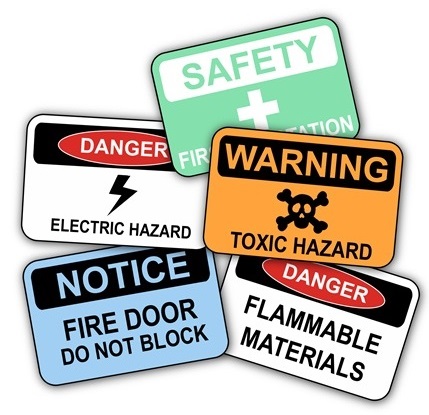I love small business owners. In most cases, they’re extremely hardworking, motivated, and committed to providing the best possible products and services. They’re wonderfully passionate about building their businesses, always seeking to improve their offerings in order to retain existing customers and gain new ones.
However, as much as I admire it, this intense focus on growth can put small businesses at risk of overlooking critical aspects of their operations.
 Safety is a prime example. As a safety professional, I know from experience that many small businesses—with no bad intentions at all—neglect key safety measures that are necessary to adequately protect their employees, and the business, from catastrophe.
Safety is a prime example. As a safety professional, I know from experience that many small businesses—with no bad intentions at all—neglect key safety measures that are necessary to adequately protect their employees, and the business, from catastrophe.
The vast majority of small businesses don’t have mandated safety programs or they have programs that are nothing but papers gathering dust on a shelf. That’s a recipe for workplace injuries and the substantial costs, reduced productivity, and liability exposure that come with them.
No small business owner wants people to get hurt, or to have the financial stability of the company put into jeopardy. And most know that safety rules and regulations apply to them just as much as to larger companies.
So why is the lack of safety programs so prevalent in small companies?
I see several reasons:
- Growth can put enormous strain on the human resources of a small business. Often, it’s all small businesses can do to keep up with an increasing workload—they don’t have time to think about anything else, including safety.
- Conversely, small businesses that are struggling understandably tend to develop a razor-sharp focus on gaining business and reducing costs. They (incorrectly) don’t see safety as having a relationship to either, so they neglect it.
- Owners of small businesses sometimes fear what will happen if they call in OSHA or consultants from their insurance company to review their safety level and offer recommendations. They expect fines or higher rates—although that is unlikely to happen. (They are more likely to get lower insurance rates and favorable consideration from OSHA.)
- Small businesses are often operating on tight margins, and profits are closely correlated to the personal wealth of owners, so there’s a hesitancy to spend any money that’s not absolutely necessary. And because they’ve been lucky and have had no serious workplace accidents so far, they don’t see spending to develop a strong safety program as essential. Therefore, they don’t invest in safety consultants or safety tools such as The Checker inspection checklists—foregoing the safety and bottom-line benefits they could gain.
- The small business has no one on staff with the safety experience needed to lead a safety program, so no one takes responsibility for it. Or someone is given responsibility but doesn’t know what steps to take to improve safety, and so does little or nothing.
With full appreciation of the time and financial pressures facing small businesses and their owners, I urge any company in one of those situations to recognize the fallacy of their approach and take steps now to strengthen the focus on safety. Any short-term financial or operational negatives will pale in comparison to the negative repercussions of a workplace injury.
Particularly for small business, without the deep pockets of larger companies, the financial impact of poor safety can be devastating.
Have you ever seen someone who’s running so fast to get somewhere that they stumble and fall? Their feet got ahead of their bodies. It’s the same thing with growing small businesses. In their eagerness to grow their business, they forget to take the important step of ensuring a safe working environment—a missed step that can cause them to tumble.
Takeaway
Small business shouldn’t become so focused on their core operations that they neglect safety programs and leave themselves open to the potentially disastrous human and financial consequence of a serious workplace accident.
Image courtesy of Compliance and Safety LLC , Creative Commons.











